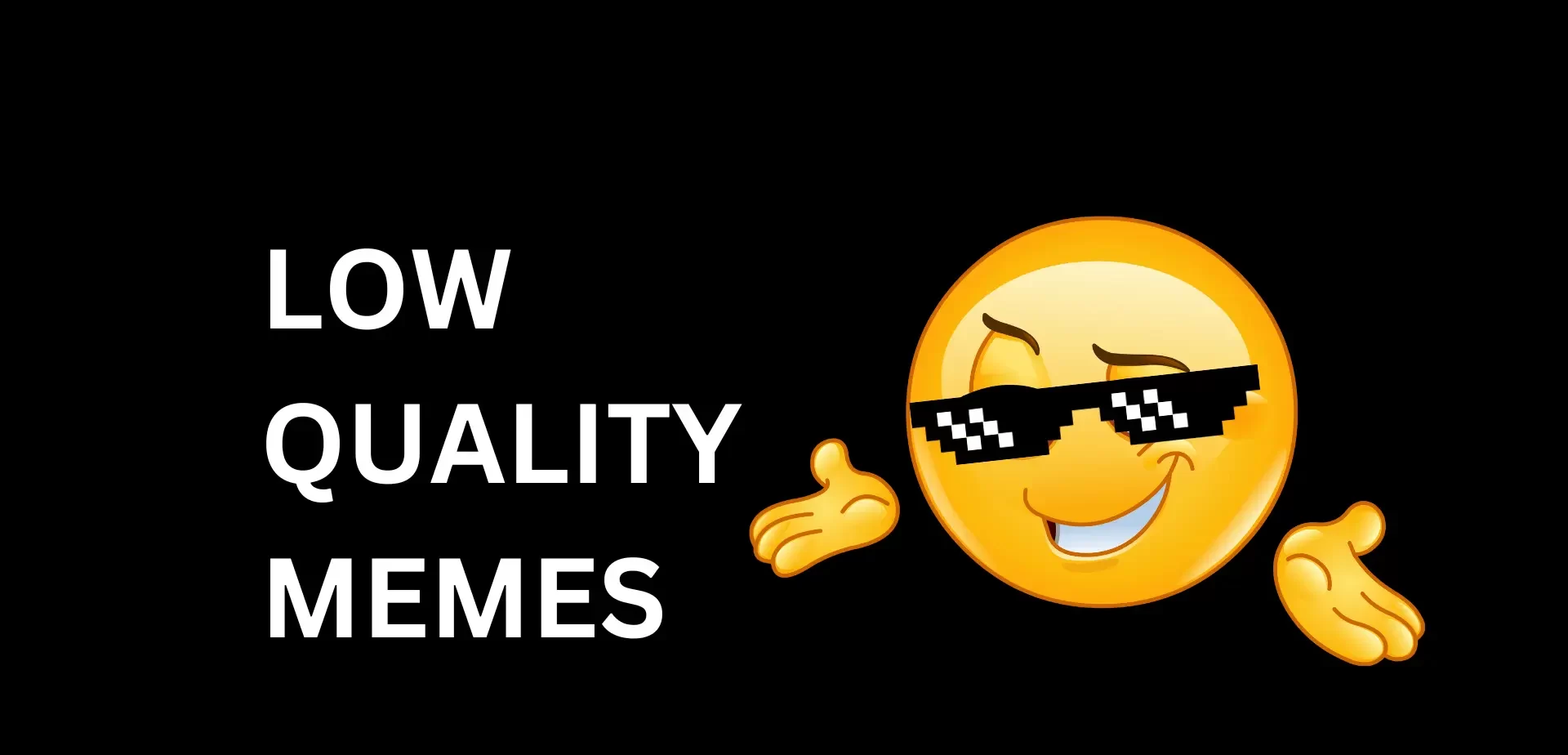Memes have become a significant cultural phenomenon in the age of the internet. From viral sensations to enduring classics, memes have the power to make us laugh, think, and even question the world around us. However, not all memes are created equal. In this article, we delve into the world of “low-quality memes,” exploring what they are, why they exist, and their surprising impact on internet culture and beyond.
Defining Low-Quality Memes
Before we can fully appreciate the world of low-quality memes, it’s important to define what we mean by “low quality.” In the context of memes, “low quality” doesn’t necessarily refer to poor image resolution or haphazard design. Instead, it describes memes that intentionally lack traditional elements of humor, aesthetic appeal, or coherence. These memes are often characterized by bizarre, nonsensical content, unconventional humor, and a disregard for traditional meme norms.
Why Low-Quality Memes Exist
Low-quality memes have gained popularity for several reasons:
Subversion of Expectations: Low-quality memes often subvert traditional expectations of humor and coherence. They challenge the conventional formula of humor, leading to surprising and unpredictable reactions.
Anti-Meme Culture: The internet is full of inside jokes, recurring themes, and predictable formats. Low-quality memes can be seen as a form of rebellion against these established norms, offering something refreshingly different.
Absurdism and Nonsense: These memes embrace absurdity and nonsense as their core elements. By pushing the boundaries of what makes sense or is funny, they create a unique and intriguing space within meme culture.
DIY Aesthetic: The do-it-yourself (DIY) nature of low-quality memes means that virtually anyone can create them. This accessibility has contributed to their widespread popularity.
Internet Trolling: Low-quality memes can be seen as a form of internet trolling. They challenge viewers’ patience and expectations, often leading to hilarious results as people react with confusion or amusement.
The Impact of Low-Quality Memes
Although they may seem frivolous or chaotic, low-quality memes have had a significant impact on internet culture and even broader society:
A New Form of Comedy: Low-quality memes introduce a novel form of comedy that relies on absurdity, irony, and unpredictability. They challenge traditional comedic structures and have found a dedicated audience who appreciate their unconventional humor.
Counterculture Appeal: Low-quality memes serve as a form of counterculture within the larger meme landscape. They allow individuals to reject established norms and celebrate the unconventional.
Internet Folklore: Some low-quality memes have achieved legendary status, becoming part of internet folklore. These memes often have dedicated fan bases and have inspired remixes, fan art, and fan fiction.
Participatory Creativity: Low-quality memes encourage creative participation. Anyone can create and share these memes, leading to a sense of inclusivity and community in meme culture.
Impact on Traditional Media: Low-quality memes have influenced traditional media and entertainment. Some TV shows, films, and advertising campaigns have incorporated elements of low-quality humor to connect with a younger, meme-savvy audience.
The Psychology of Low-Quality Memes
To understand the appeal of low-quality memes, we can look at some psychological factors at play:
Surprise and Uncertainty: Low-quality memes thrive on surprise and uncertainty. The unpredictability of the humor keeps viewers engaged and curious.
Cognitive Dissonance: These memes often create cognitive dissonance, as the content defies logic and traditional humor. Viewers must reconcile this dissonance, leading to a humorous response.
Catharsis: The absurdity and nonsense in low-quality memes can offer a form of catharsis, allowing viewers to release tension through laughter.
Niche Community: Low-quality memes often form communities of like-minded individuals who share a particular sense of humor. This sense of belonging is a powerful motivator for meme creators and consumers.
Reflecting Contemporary Culture: Low-quality memes reflect the chaos and unpredictability of the internet and contemporary culture, making them relatable to many.
The Future of Low-Quality Memes
As long as internet culture continues to evolve and embrace new forms of humor, low-quality memes are likely to remain a part of the online landscape. They represent a form of resistance against conformity, offering a space for unconventional creativity and community building. Whether you find them hilarious, confusing, or something in between, low-quality memes serve as a testament to the ever-changing and diverse nature of internet culture.



